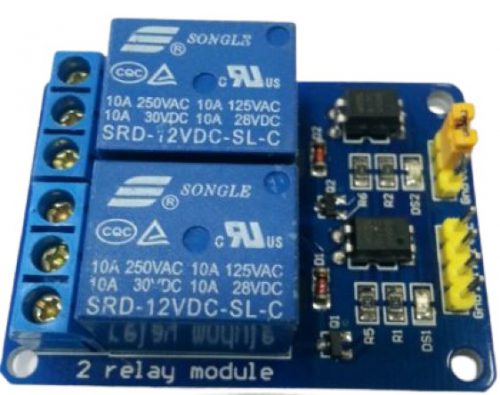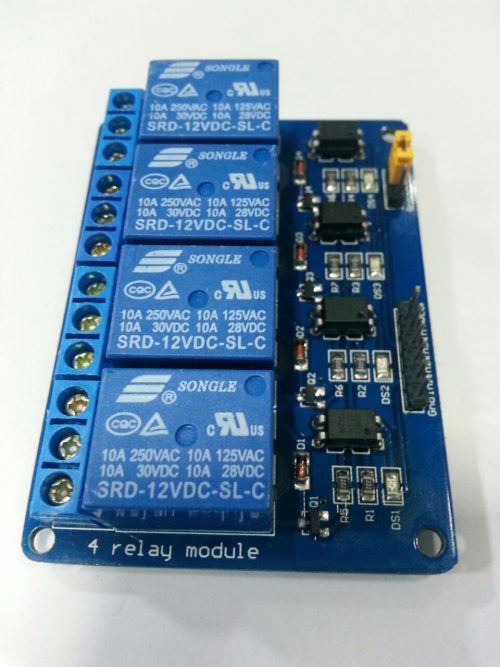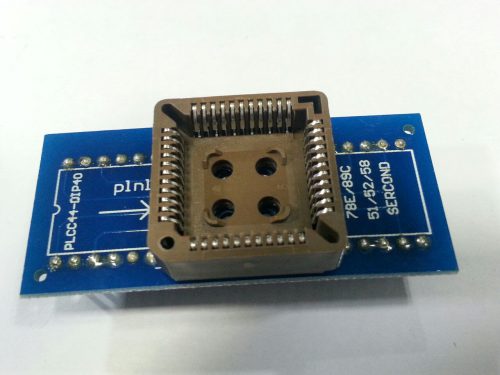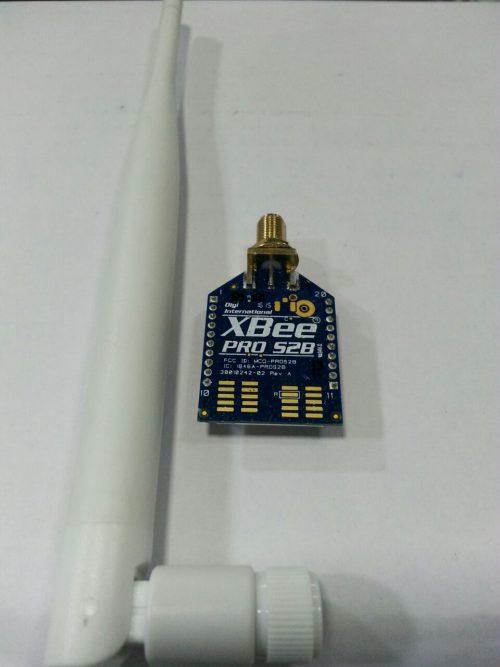-
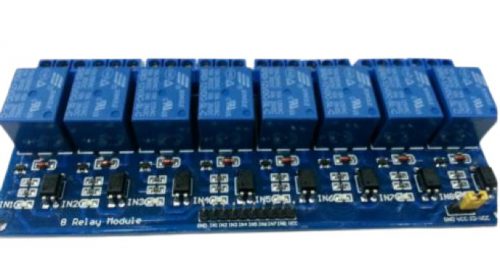 The 8 channel 12V relay module provides 8 optically isolated inputs that accept a wide range of voltage. This is a great way to switch on or off AC or DC loads using your Arduino. The relays are single-pole double-throw (SPDT) and are rated for 10A @ 250VAC. The ground for the relay coils is separate from the ground for the input signals. This, along with the optical isolation, provides a total galvanic isolation between the input and output. The two grounds could be joined together if desired with the included jumper. The relay coils run on 12VDC, and the module has screw-terminal blocks for sturdy and reusable attachments for the external load. The signal and power inputs run through the male single-row header.
The 8 channel 12V relay module provides 8 optically isolated inputs that accept a wide range of voltage. This is a great way to switch on or off AC or DC loads using your Arduino. The relays are single-pole double-throw (SPDT) and are rated for 10A @ 250VAC. The ground for the relay coils is separate from the ground for the input signals. This, along with the optical isolation, provides a total galvanic isolation between the input and output. The two grounds could be joined together if desired with the included jumper. The relay coils run on 12VDC, and the module has screw-terminal blocks for sturdy and reusable attachments for the external load. The signal and power inputs run through the male single-row header. -
 A simple flex sensor 2.2" in length. As the sensor is flexed, the resistance across the sensor increases. The resistance of the flex sensor changes when the metal pads are on the outside of the bend (text on inside of bend). Connector is 0.1" spaced and bread board friendly. Check datasheet for full specifications.
A simple flex sensor 2.2" in length. As the sensor is flexed, the resistance across the sensor increases. The resistance of the flex sensor changes when the metal pads are on the outside of the bend (text on inside of bend). Connector is 0.1" spaced and bread board friendly. Check datasheet for full specifications. -
 A simple flex sensor 4.5" in length. As the sensor is flexed, the resistance across the sensor increases. The resistance of the flex sensor changes when the metal pads are on the outside of the bend (text on inside of bend). Connector is 0.1" spaced and bread board friendly. Check datasheet for full specifications.
A simple flex sensor 4.5" in length. As the sensor is flexed, the resistance across the sensor increases. The resistance of the flex sensor changes when the metal pads are on the outside of the bend (text on inside of bend). Connector is 0.1" spaced and bread board friendly. Check datasheet for full specifications. -
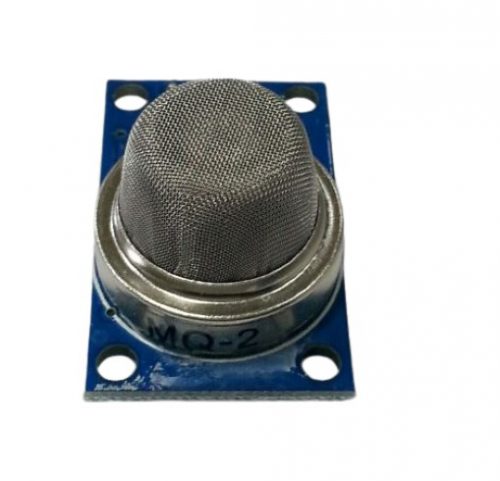 The MQ series of gas sensors use a small heater inside with an electro-chemical sensor. They are sensitive for a range of gasses and are used indoors at room temperature. The output is an analog signal and can be read with an analog input of the Arduino. The MQ-2 Gas Sensor module is useful for gas leakage detecting in home and industry. It can detect LPG, i-butane, propane, methane ,alcohol, hydrogen and smoke.
The MQ series of gas sensors use a small heater inside with an electro-chemical sensor. They are sensitive for a range of gasses and are used indoors at room temperature. The output is an analog signal and can be read with an analog input of the Arduino. The MQ-2 Gas Sensor module is useful for gas leakage detecting in home and industry. It can detect LPG, i-butane, propane, methane ,alcohol, hydrogen and smoke. -
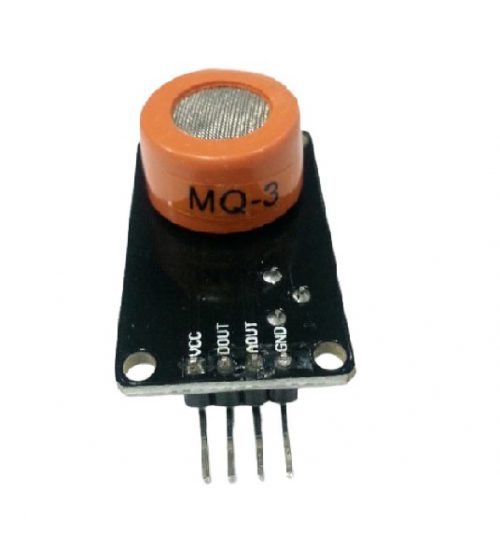 This module is made using Alcohol Gas Sensor MQ3. It is a low cost semiconductor sensor which can detect the presence of alcohol gases at concentrations from 0.05 mg/L to 10 mg/L. The sensitive material used for this sensor is SnO2, whose conductivity is lower in clean air. It’s conductivity increases as the concentration of alcohol gases increases. It has high sensitivity to alcohol and has a good resistance to disturbances due to smoke, vapor and gasoline. This module provides both digital and analog outputs. MQ3 alcohol sensor module can be easily interfaced with Microcontrollers, Arduino Boards, Raspberry Pi etc.
This module is made using Alcohol Gas Sensor MQ3. It is a low cost semiconductor sensor which can detect the presence of alcohol gases at concentrations from 0.05 mg/L to 10 mg/L. The sensitive material used for this sensor is SnO2, whose conductivity is lower in clean air. It’s conductivity increases as the concentration of alcohol gases increases. It has high sensitivity to alcohol and has a good resistance to disturbances due to smoke, vapor and gasoline. This module provides both digital and analog outputs. MQ3 alcohol sensor module can be easily interfaced with Microcontrollers, Arduino Boards, Raspberry Pi etc. -
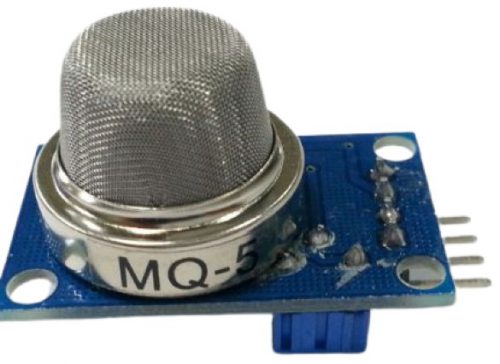 Gas Sensor(MQ5) module is useful for gas leakage detection (in home and industry). It is suitable for detecting H2, LPG, CH4, CO, Alcohol. Due to its high sensitivity and fast response time, measurements can be taken as soon as possible. The sensitivity of the sensor can be adjusted by using the potentiometer.
Gas Sensor(MQ5) module is useful for gas leakage detection (in home and industry). It is suitable for detecting H2, LPG, CH4, CO, Alcohol. Due to its high sensitivity and fast response time, measurements can be taken as soon as possible. The sensitivity of the sensor can be adjusted by using the potentiometer. -
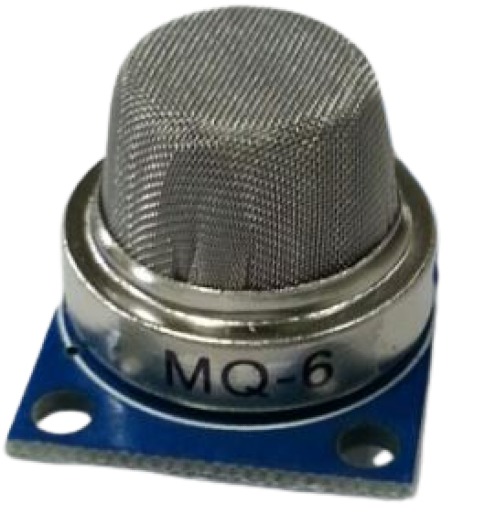 MQ 6 Gas sensor is used as LPG, Butane and Propane Sensor to generate alarm when there is leakage of these gases from the source. MQ6 is a highly sensitive gas sensor to petroleum based gases but less sensitive to Alcohol and Carbon di oxide. This simple sensor can be installed in the kitchen to give warning alarm if there is leakage of LPG.
MQ 6 Gas sensor is used as LPG, Butane and Propane Sensor to generate alarm when there is leakage of these gases from the source. MQ6 is a highly sensitive gas sensor to petroleum based gases but less sensitive to Alcohol and Carbon di oxide. This simple sensor can be installed in the kitchen to give warning alarm if there is leakage of LPG. -
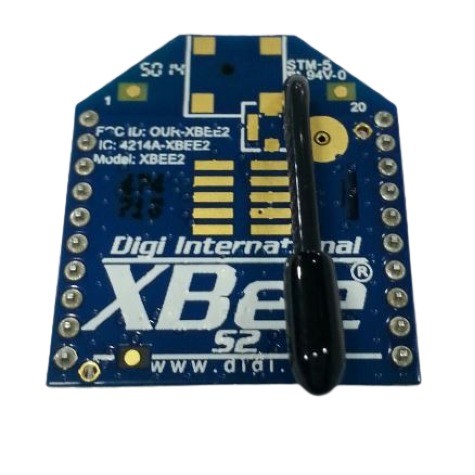 This is the XBee XB24-Z7WIT-004 module from Digi. Series 2 improves on the power output and data protocol. Series 2 modules allow you to create complex mesh networks based on the XBee ZB ZigBee mesh firmware. These modules allow a very reliable and simple communication between microcontrollers, computers, systems, really anything with a serial port! Point to point and multi-point networks are supported. These are essentially the same hardware as the older Series 2.5, but have updated firmware. They will work with Series 2.5 modules if you update the firmware through X-CTU.
This is the XBee XB24-Z7WIT-004 module from Digi. Series 2 improves on the power output and data protocol. Series 2 modules allow you to create complex mesh networks based on the XBee ZB ZigBee mesh firmware. These modules allow a very reliable and simple communication between microcontrollers, computers, systems, really anything with a serial port! Point to point and multi-point networks are supported. These are essentially the same hardware as the older Series 2.5, but have updated firmware. They will work with Series 2.5 modules if you update the firmware through X-CTU. -
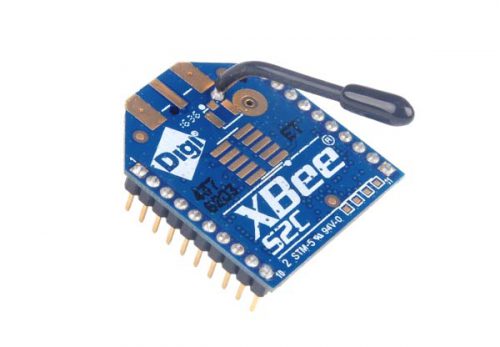 This is the XBee XBP24-BZ7WIT-004 module from Digi. The new Series 2B improves upon the power output and data protocol of the Pro Series2. Series 2B modules allow you to create complex mesh networks based on the XBee ZB ZigBee mesh firmware. These modules allow a very reliable and simple communication between microcontrollers, computers, systems, really anything with a serial port! Point to point and multi-point networks are supported. Series 2B modules use a different hardware configuration from the earlier models and while they will communicate with Series 2 XBee modules, they are not compatible with the outdated Series 2.5 Modules.
This is the XBee XBP24-BZ7WIT-004 module from Digi. The new Series 2B improves upon the power output and data protocol of the Pro Series2. Series 2B modules allow you to create complex mesh networks based on the XBee ZB ZigBee mesh firmware. These modules allow a very reliable and simple communication between microcontrollers, computers, systems, really anything with a serial port! Point to point and multi-point networks are supported. Series 2B modules use a different hardware configuration from the earlier models and while they will communicate with Series 2 XBee modules, they are not compatible with the outdated Series 2.5 Modules. -
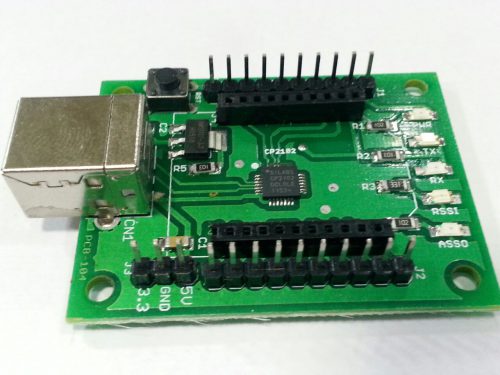 This is a simple to use, USB to serial base unit for the XBee line. This unit works with all XBee modules including the Series 1 and Series 2.5, standard and Pro version. Plug the unit into the XBee Explorer, attach USB cable, and you will have direct access to the serial and programming pins on the XBee unit. The board is powered by the USB cable. XBee modules and USB cable are sold separately.
This is a simple to use, USB to serial base unit for the XBee line. This unit works with all XBee modules including the Series 1 and Series 2.5, standard and Pro version. Plug the unit into the XBee Explorer, attach USB cable, and you will have direct access to the serial and programming pins on the XBee unit. The board is powered by the USB cable. XBee modules and USB cable are sold separately. -
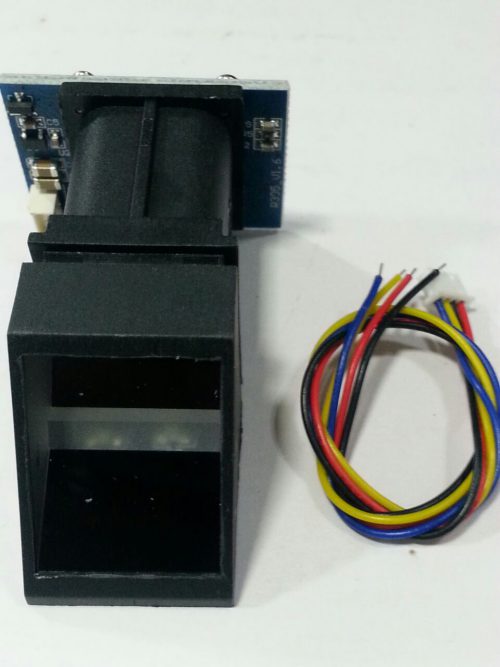 This is an optical bio-metric fingerprint reader/sensor (R305) module with TTL UART interface for direct connections to a microcontroller UART. The user can store the finger print data in the module and can configure it in 1:1 or 1: N mode for identifying the person. This module can directly interface with any 3.3V or 5V microcontrollers, but a suitable level converter/serial adapter is required for interfacing with the serial port of a PC.
This is an optical bio-metric fingerprint reader/sensor (R305) module with TTL UART interface for direct connections to a microcontroller UART. The user can store the finger print data in the module and can configure it in 1:1 or 1: N mode for identifying the person. This module can directly interface with any 3.3V or 5V microcontrollers, but a suitable level converter/serial adapter is required for interfacing with the serial port of a PC. -
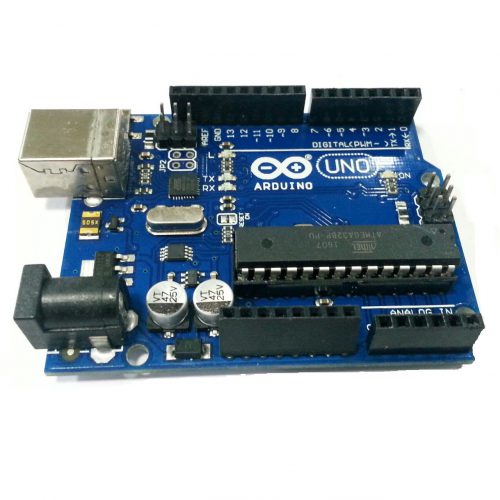 he Arduino Uno is a microcontroller board based on the ATmega328. It has 14 digital input/output pins (of which 6 can be used as PWM outputs), 6 analog inputs, a 16 MHz ceramic resonator, a USB connection, a power jack, an ICSP header, and a reset button. It contains everything needed to support the microcontroller; simply connect it to a computer with a USB cable or power it with a AC-to-DC adapter or battery to get started. The Uno differs from all preceding boards in that it does not use the FTDI USB-to-serial driver chip. Instead, it features the Atmega16U2 (Atmega8U2 up to version R2) programmed as a USB-to-serial converter. Revision 2 of the Uno board has a resistor pulling the 8U2 HWB line to ground, making it easier to put into DFU mode.
he Arduino Uno is a microcontroller board based on the ATmega328. It has 14 digital input/output pins (of which 6 can be used as PWM outputs), 6 analog inputs, a 16 MHz ceramic resonator, a USB connection, a power jack, an ICSP header, and a reset button. It contains everything needed to support the microcontroller; simply connect it to a computer with a USB cable or power it with a AC-to-DC adapter or battery to get started. The Uno differs from all preceding boards in that it does not use the FTDI USB-to-serial driver chip. Instead, it features the Atmega16U2 (Atmega8U2 up to version R2) programmed as a USB-to-serial converter. Revision 2 of the Uno board has a resistor pulling the 8U2 HWB line to ground, making it easier to put into DFU mode.

